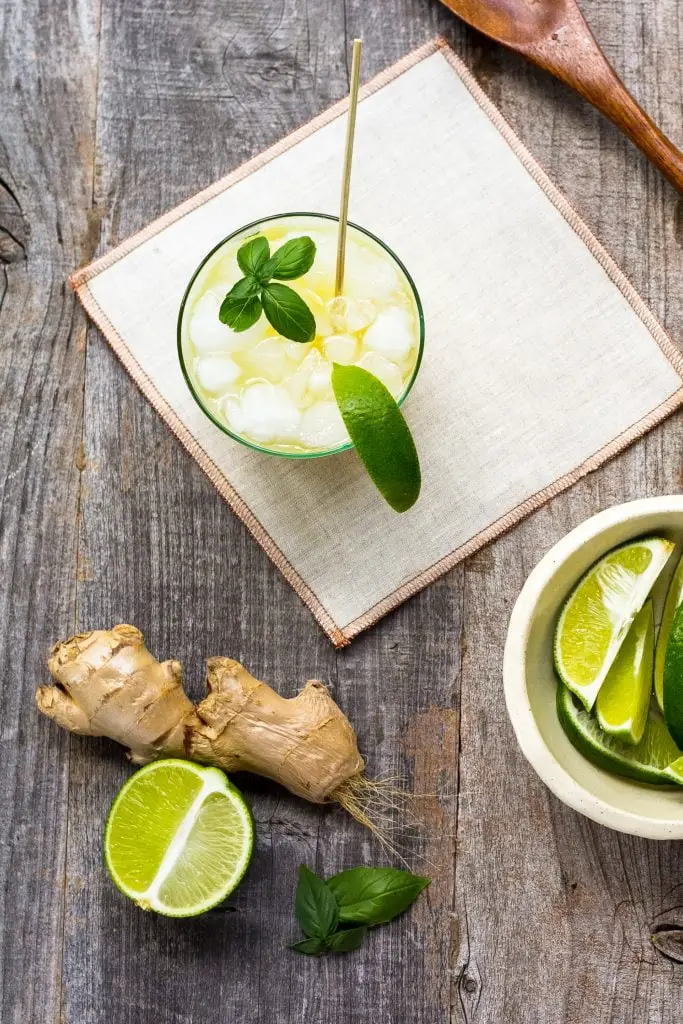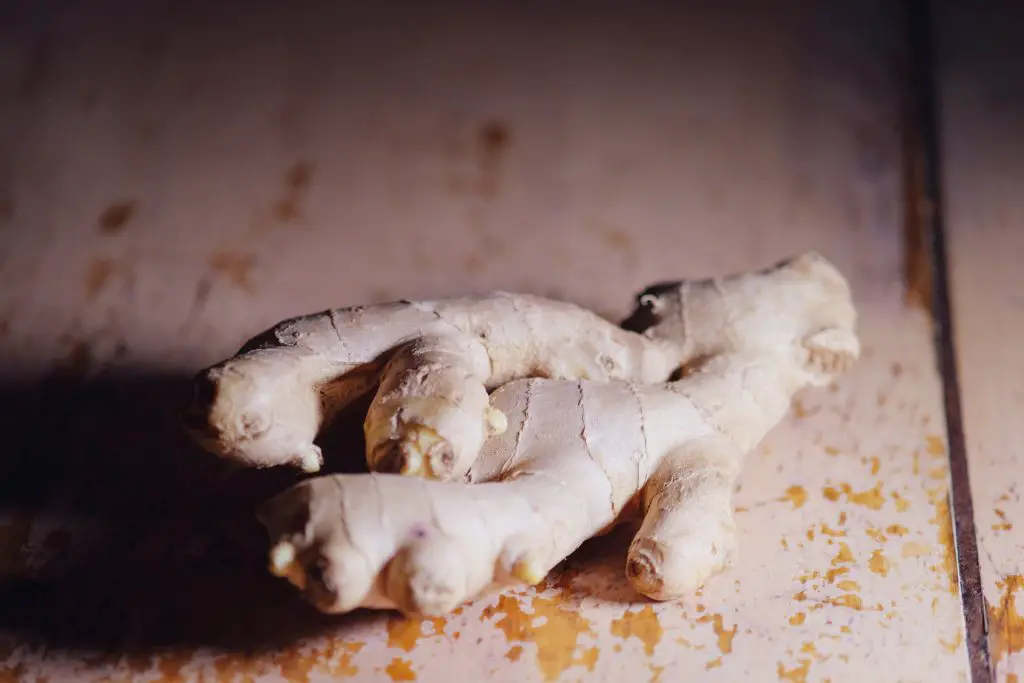How Cold Hardy Is Ginger? Ginger is traditionally known as plants that can be only grown in Tropical and Subtropical climates. This perception of where the root can be grown is largely driven by the dominant commercial producers of Ginger, which are generally located in Tropical locations, such as Northern Australia and South East Asia.
However, you might be surprised to learn that Ginger is quite cold tolerant. Several varieties have been tested, and have been found to tolerate temperatures as low as -23°C (-10°F), which makes it possible to grow them in US hardiness Zone of 6 or above, provided that the correct variety is selected. As with many plants exposed to those temperatures, the foliage will die back in Winter, before sprouting in Spring. A list of 8 varieties that are suited to colder climates, is provided in the table below.
For more information, you may also like to visit our vegetable database which has thousands of different varieties for over 90 different fruits and vegetables.
| Name | Min. Temp. | Light | Description |
| Native Redback ginger (Alpinia Caerulea) | 20°F/-6°C | Part-full shade | Lush, under-story Ginger, with glossy evergreen foliage, tan on the reverse side of the leaves. Creamy-white flowers appear in Summer, followed by clusters of deep blue berries. |
| Galangal/ Thai Ginger (Alpinia Galanga) | 10°F/ -12°C | Part shade | Galangal has a knobby root, that has a delicious exotic taste, with a touch of Pepper and Ginger. Shoots, flower buds & flowers can be eaten cooked, shoots are quite hot, when eaten raw. |
| Japanese Ginger (Alpinia Japonica) | 10°F/-12°C | Part shade | Japanese Ginger is native to China, Central and Southern Japan and Taiwan. It is a perennial plant that grows to 2-2.5ft tall. It produces white tubular flowers with red striping in Summer. |
| Variegated Shell Ginger (Alpinia Zerumbet) | 0°F/ -17°C | Full Sun to Part Shade | This plant is native to open woodlands of Tropical Eastern Asia, and is frequently used as an annual foliage plant in colder climates. It is Winter hardy in Zones 8-10, although it may survive in Zone 7, with Winter protection. |
| Crepe Ginger (Costus Speciosus) | 0°F/-17°C | Part Shade | The flowers look like crepe paper, hence the common name of Crepe Ginger. Ideally, this plant should be grown in fertile soil, that is moist but well-drained and requires 3-5 hours of sun. Crepe Ginger will grow a 3 ft wide clump in the second year, under ideal growing conditions. |
| Mango Ginger (Curcuma Amada) | 20°F/-6°C | Part Shade | Curcuma Amada is one of two species, with the common name ‘Mango Ginger.’ It is one of the branching Rhizome types, and thus, a very good grower. Grows to 4 Feet in bright shade to full sun. It will continue to bloom all Summer long, making it one of the longest blooming seasons of any hardy Ginger. Hardy in Zone 8 and above (a good candidate for trialling in Zone 7). |
| Round Rooted Galangal (Kaempferia Rotunda) | 15°F/-9°C | Part Shade | Has beautiful variegated leaves and Crocus-like flowers, which emerge after dormancy before the leaves. Young leaves are eaten raw or cooked, also the root tubers can be eaten cooked and are quite hot. |
| Myoga Ginger (Zingiber Mioga) | -10°F/-23°C | Part Shade | This wonderful Japanese and Korean native Ginger plant forms 4′ tall, spring-emerging stalks, laden with lush, green, tropical foliage. A planting of Myoga enlarges slowly, thanks to short, thick Rhizomes, eventually forming a 5ft wide patch, over a 10 Year period. |

How To Grow Ginger In Cold Climates
The Ginger root, is one of the easiest plants to grow in the garden. It requires little maintenance, and can largely be left to its own devices throughout the year. To plant Ginger, take a section of Rhizome that is approximately 5 cm (2 inches) long, and plant into the soil at a depth of 5 cm (2 inches).
The location of planting should be in a position that has partial shade, that ideally gets the morning sun, but avoids the hot afternoon sun. The soil conditions preferred are moist soil, with plenty of organic matter and a neutral pH. To read more on how to test soil pH and adjust it, go to https://planyourpatch.com/why-is-ph-important-in-soil/.
Most Gingers will produce lush green foliage, that is similar to a Hosta or Canna Lily in Spring and Summer, before producing its flowers. The foliage will die back as the weather cools, at this point, many people lift the Ginger plant for harvesting.
When harvesting, be sure to select the best Rhizomes for replanting the following year. This will ensure that you have an ongoing supply of Ginger for many years.
When growing Gingers in regions that have relatively cold Winters, it is advisable to provide some protection to the areas where the Ginger is growing, to ensure the Rhizome survives the Winter. Some suggested measures include placing a thick layer of mulch on the area to insulate the ground from the worst of the Winter weather. If survival of the plant becomes an ongoing issue, the other option is to treat the plant as an Annual bulb, and remove the Rhizomes in Autumn, and replant them in Spring or if planting in a pot, bring it inside for the Winter.

Can You Grow Store Bought Ginger?
Yes, it is possible. The variety most commonly sold is Chinese Ginger or Common Ginger (Zingiber Officinale). It is not as hardy as some of the varieties on the list above but is hardy down to Zone 8 or 9. When attempting to grow Ginger from the store, pick the best-looking one, at the grocery store. The Rhizome should be plump and well hydrated. There may even be ones that have begun to sprout, these are ideal for planting.
To encourage sprouting to commence, place the Rhizomes in a warm place, until the “Nodes or Eyes” start to grow. This could take a couple of weeks. Make sure that the temperature and moisture levels in your home match closely, those of Ginger’s natural habitat. One way to do this is to place the Rhizomes in an egg carton that has been soaked with water, to increase the humidity.
Once the sprouts appear, cut the root into pieces, ensuring there is an “Eye” on each piece. Plant the ginger pieces into the soil, just below the surface, at a depth of one inch. Ensure that the Ginger is kept moist, by regularly watering. However, do not allow the Rhizome to sit in soggy soil, as there is a risk of it developing Mould or Rotting. To aid in the growth, it is a good idea to increase the humidity of the environment, by placing a Cloche over the growing area. Ginger may be harvested at any stage, however the longer you leave it to grow, the larger the Rhizomes will be.

How To Store Ginger Longer
Ginger can be stored in a refrigerator. If doing this, it is best to store it with the peel still on, as Ginger that has been cut, will not keep as long. To maximize the storage time, place your Ginger in a freezer bag; press out most of the air. It can be stored in crisper drawer, in your refrigerator, for a couple of weeks.
The other option is to freeze Ginger, which will allow it to be stored indefinitely. To do this, place the Ginger in a freezer bag, or another freezer-safe container, to protect it from freezer burn, with the peel on. Whenever Ginger is required, it can be retrieved from the freezer, grated and any remaining can be returned to the freezer. There is no need to thaw it first before grating.
The best method, in my view, is to simply leave the Ginger in the soil and harvest it as needed. Just lift the plant, cut off a piece of the root, and return it to its location. It won’t affect the plant at all, as long as you keep it watered. However, it is a good idea to mark the location of the plant with a cane, as it will die back in Winter making it difficult to find.
Relevant Articles
12 Tips To Boost Your Garden Output
10 Ways To Make Your Vegetable Garden Look Beautiful
7 Easy Steps To Creating An Orchard In Your Own Yard
When Should I Plant Winter Vegetables?
